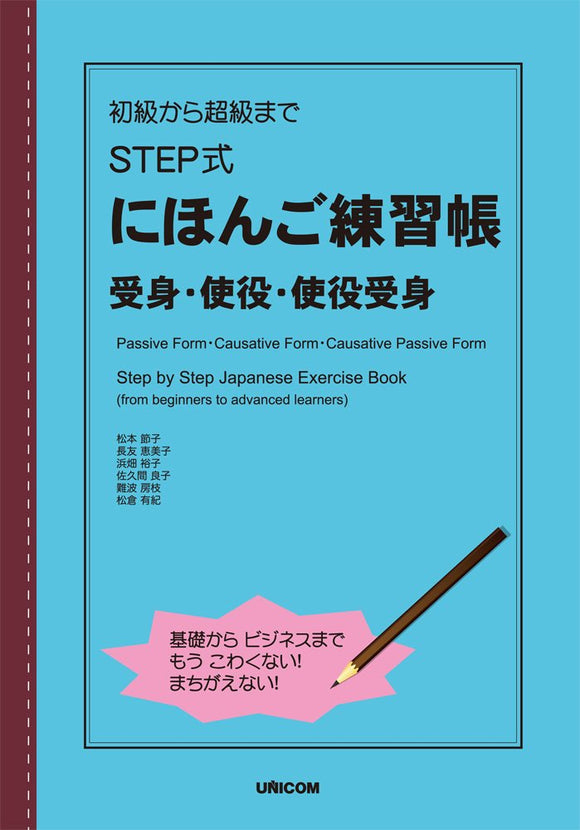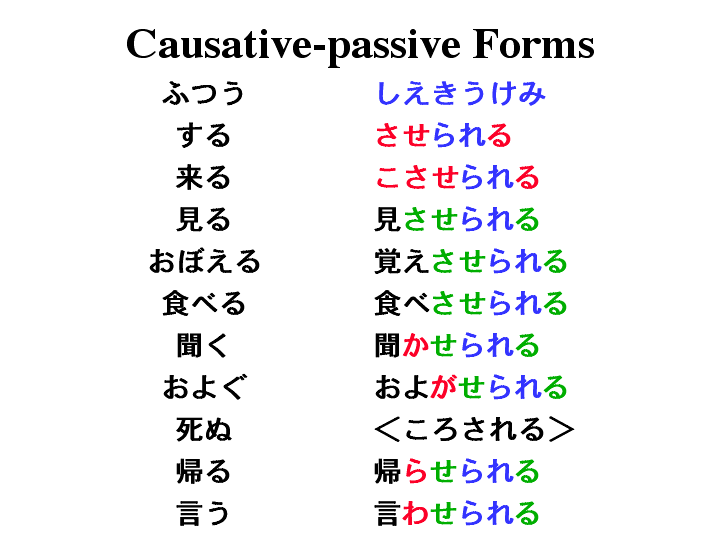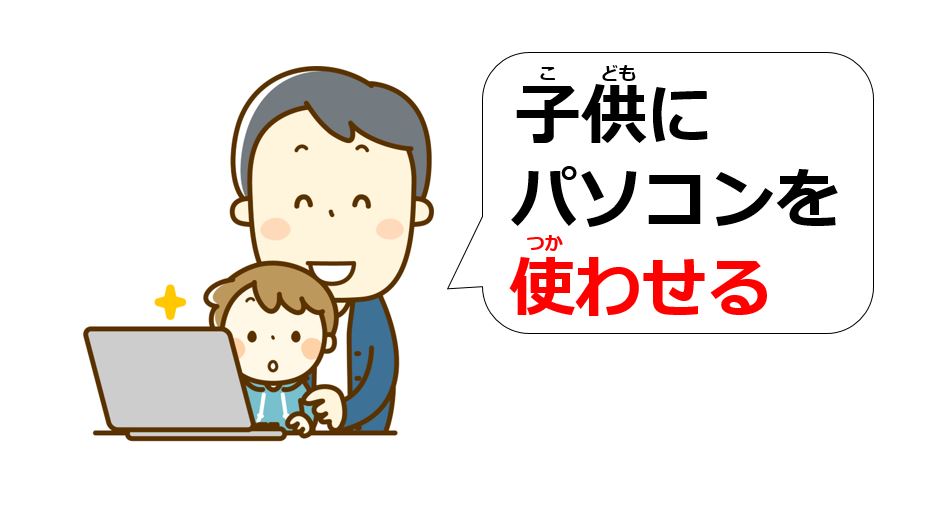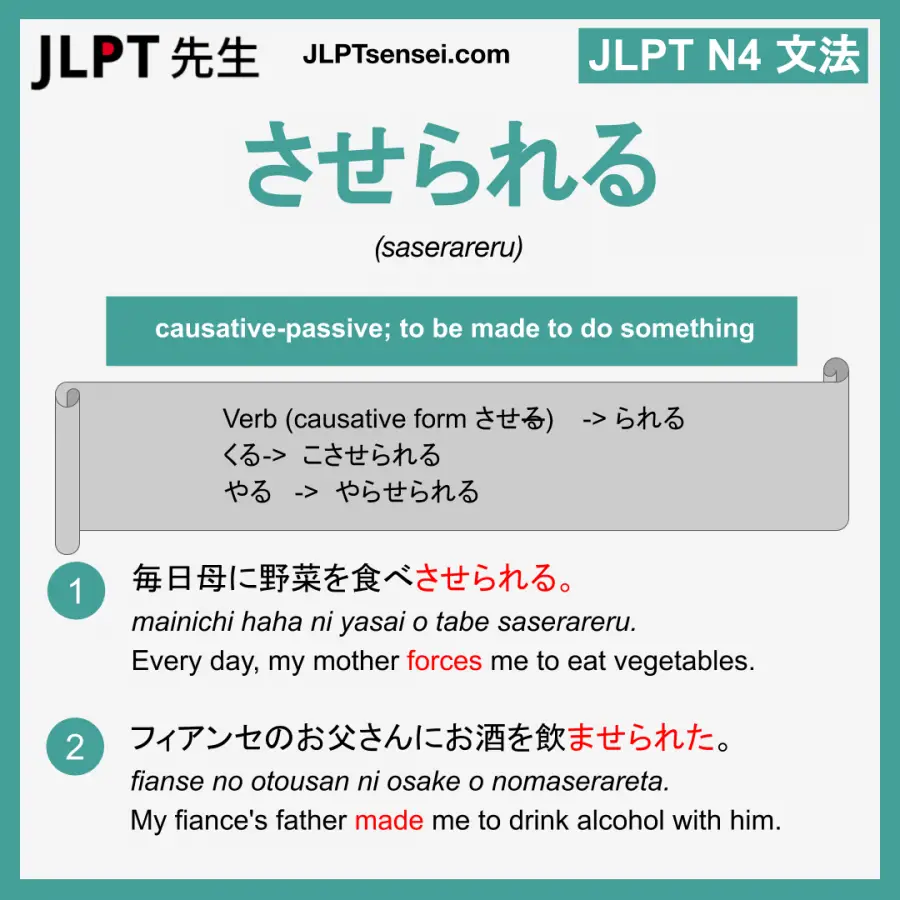
Is Japanese CCGBank empirically correct? A case study of passive and
The Basics 〜られる is a suffix that makes a verb passive. In other words, attaching 〜られる to a verb tells us that the verb was done to someone or something. For instance, the passive form of 食べ る (to eat) is 食べ られる (to be eaten). To use it in a sentence, if my surfboard was eaten by a shark, I could say サーフボードはサメに食べられた.

JLPT N4 Grammar させられる (saserareru) CausativePassive Form
The Basics 〜させる is a verb suffix that adds a meaning of causation or permission to a verb. In other words, adding 〜させる means that someone is forced to do the action, or allowed to do the action. For example, if your mom forces your dad to eat bugs, you could say お母さんはお父さんに虫を食べさせる.

Japanese Passive and Causative Verbs Isang Way Para Mas Madaling
2017-10-16 by Tae Kim Causative and Passive Verbs We will now learn the last two major types of verb conjugations: causative and passive forms. These two verb conjugations are traditionally covered together because of the notorious causative-passive combination. We will now go over what all these things are and how they are used. Causative Verbs

ADVANCED JAPANESE GRAMMAR Causative And Passive Verb Forms される
Japanese Grammar: Causative-Passive Verbs You're probably thinking, "What the hell the causative-passive?" All I mean by this are verb structures that combine both the causative and passive to form "to be made to do by" sentences.

Is Japanese CCGBank empirically correct? A case study of passive and
Causative Sentences. When you use the causative form of a verb, you can describe who makes someone do something, and who lets someone do something. u- verbs: Drop the - u and add -ase-ru. せんせいはがくせいにかいわをおぼえさせました。. (dirctor)は (cast)に (action). The professor made the students memorize the.

Japanese Causative Form Japan 24 Hours
The causative form, known as 使役動詞 ( shieki dōshi) in Japanese, describes situations wherein someone or something causes some action to happen. There are 2 nuances to the causative form: Make (someone do something) Let/Allow (someone to do something)

「Learn Japanese」 CausativePassive Form (させられる Verb Conjugation) YouTube
The Causative-Passive form (V-SASERARERU) expresses "I was forced to do something against my will and I'm unhappy about it," or "Someone is forced to do some.

Passive Form, Causative Form, Causative Passive Form Step by Step
Understanding the Causative-passive Form in Japanese Grammar The causative-passive form is a key aspect of Japanese grammar that allows speakers to express complex actions and relationships. In this article, we will delve deeply into the causative-passive form, covering essential concepts such as conjugation rules, sentence structure, and practical examples. By the end of this comprehensive […]

JLPT N4 Japanese Grammar Lesson How to Use Causative Passive Form in
The Passive (される) First of all, a quick reminder of what we mean by the passive. To create the passive in Japanese for all verbs with one exception, we hop two spaces left from the u-ending syllable to an a-ending syllable and add れる. The exception is う ending verbs such as 言う (to say) and 買う (to buy) where う is replaced.

『GENKI 2』Lesson 23 (1)┃The Japanese CAUSATIVEPASSIVE Form YouTube
Cause to be Passive Outline Causative and Passive Verbs Causative Verbs Passive Verbs Using passive form to show politeness Causative-Passive Forms Causative and Passive Verbs We will now learn the last two major types of verb conjugations: causative and passive forms.

Causativepassive Forms
"Causative-passive" sentences are the passive version of the causative sentences. You can use causative-passive sentences when you want to say that you were made to do, or harassed or talked into doing something. Forming causative-passive forms: 1) ru -verbs: Drop - ru and add - sase-rare-ru. たべる -> たべさせられる

Japanese Causative passive form Ru verbs Group 2 ~させられる [JLPT N4
Causative-Passive (JLPT N4) | Bunpro - Japanese Grammar Explained . ちからしごと go to the concert of a band that I do not know. , Bunpro SRS. from Osaka. When the auxiliary verb せる (or させる) 'to make/let do' is combined with the auxiliary verb られる 'to be the receiver of', it creates the causative-passive form of v.

Japanese Passive Form I Will Teach You A Language
If you need to review the causative form and then add the passive form to it, then the following are the rules for deriving the causative-passive form: Group 1: Change the final る to させられる. Group 2: Change the final vowel u to a and add せられる. Group 3: くる→こさせられる、する→させられる. There is no.

Dr Wes Robertson on Twitter "An intermediate guide to the passive
1 The definition of the させられる form 2 How to form the causative passive verb form 3 Some example sentences of the させられる form 4 Expressing "to be made to do" something in Japanese with the causative passive form. 5 What is the Japanese causative passive form (〜させられる ) and when can I use it? 6 How do you make a Japanese causative passive form verb

Japanese Causative Form with the particle に and を
Causative Form. This verb form expresses that one person causes another person do something. How to derive the Causative form: Group 1: Change the final る to させる. Group 2: Change the final vowel u to a and add せる. Group 3: くる→こさせる、する→させる. Consider the single vowel u (う) at the end of certain verbs.

JLPT N4 Grammar させられる (saserareru) CausativePassive Form
Verb Conjugations The causative is used to express "make" or "let" someone do something". In fact, we've already met one way to form these expressions when 〜てもらう was introduced. As we saw, this structure was not entirely neutral—often implying that the speaker was grateful to the person performing the action.